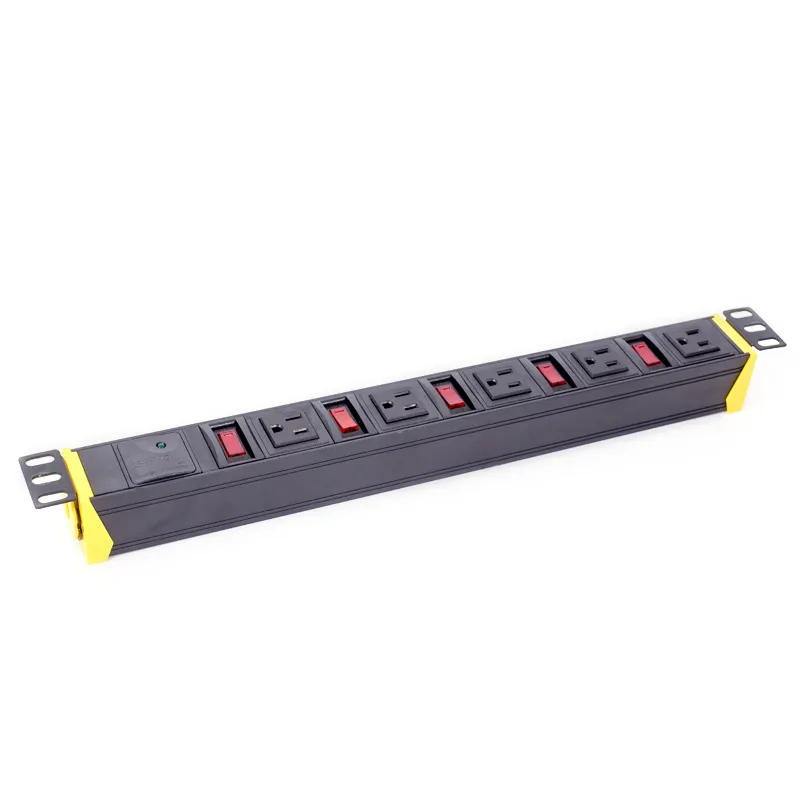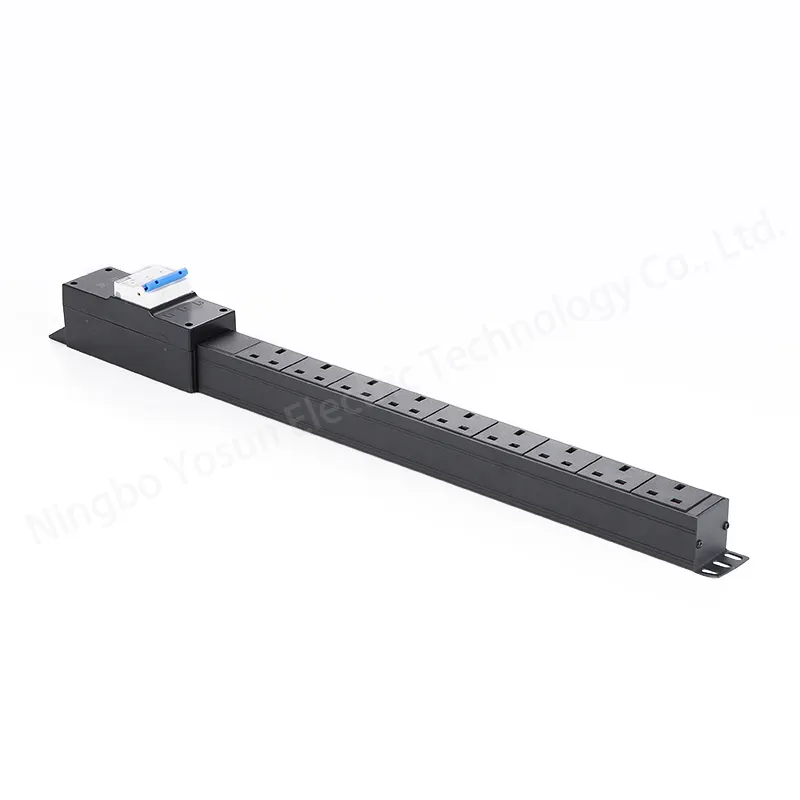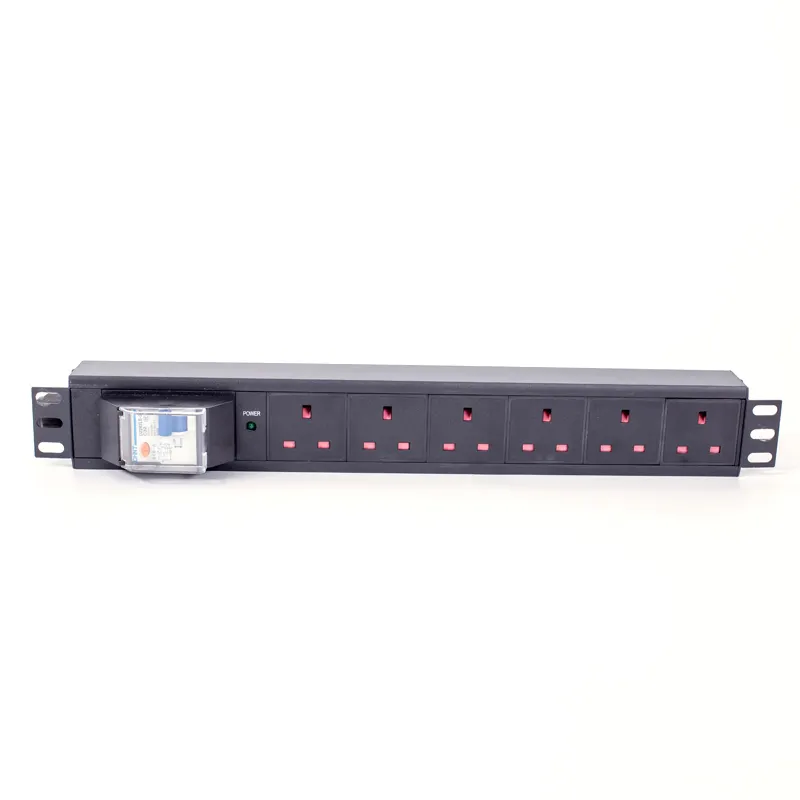© Copyright – 2010-2023 : All Rights Reserved. Sitemap
Power Distribution Unit PDU, rack mount PDU, PDU data center, Smart PDu, intelligent PDU
Power Distribution Unit PDU, rack mount PDU, PDU data center, Smart PDu, intelligent PDU
DTI-CX 2025 Digital Transformation Indonesia Conference, DATE:6-7 AUG.2025, Booth No.: C21

Imagine a busy data center during its busiest time. Suddenly, the power goes out and everything could stop. There is a real risk of losing data and stopping services. An automatic transfer switch helps right away. It gives backup power so systems keep working. The ATS PDU, like the YOSUN model, uses smart technology. It switches between power sources in just milliseconds. This smooth change helps things stay reliable and stops downtime. Many groups use an intelligent PDU or a switched PDU. These help keep their power safe and strong.
An ATS PDU keeps power on by switching to backup fast. It does this in just milliseconds. This stops downtime when the main power goes out.
Dual input ATS PDUs make things more reliable. They connect to two power sources. If one power source fails, the other one works right away.
New ATS PDUs have smart tools for monitoring. These tools let teams watch power use as it happens. This helps find problems before they get worse.
Picking the right ATS PDU means knowing your power needs. You must also check if it works with your current equipment. This helps stop overloads.
Using ATS PDUs can lower the risk of downtime a lot. They protect important systems. They also help businesses save money by keeping things running.

An ats pdu is very important for power in special places. It sends electricity to equipment and keeps the power steady. The main job is to make sure systems do not stop, even if the main power fails. This helps groups avoid losing money and keeps data safe.
The main parts of an ats pdu are:
A strong box and frame to keep things safe
Main power plug to connect to the main source
Backup power plug to connect to another source like a generator
A switch that moves power fast
Control logic that checks power and switches when needed
Sensors and tools to watch voltage and frequency
Manual panel for workers to test and fix things
All these parts work together to give smooth power. The ats pdu always checks both power sources and is ready to help if there is a problem.
Tip: Many new ats pdus have smart tools. These tools watch power in real time and send alerts. This helps teams find problems before they get worse.
The automatic transfer switch in an ats pdu is like the brain. It always watches the main power. If the main power stops, the switch moves power to the backup right away. This happens very fast, so devices do not turn off.
Here is how it works:
The main power stops working.
The ats pdu checks if the backup is good.
The switch moves power to the backup.
When the main power comes back, the switch moves power back.
There are different ways to switch power:
Closed transition: Connects backup before turning off the main.
Open transition: Turns off the main before using backup.
Delayed transition: Waits a bit before switching power.
New ats pdu technology is better and has more features. Some new things are modular design, remote watching, and sensors for the environment. These help groups keep power on and protect their systems.
Advancement Type | Description |
|---|---|
Reliability | Safe designs keep downtime under 2 hours each year. |
Modularity and Hot-Swappability | Parts can be changed without turning off the system. |
Intelligent Automation | Remote watching and smart tools stop downtime before it starts. |
Integrated Security Features | Security rules keep out cyber threats. |
Environmental Monitoring | Sensors watch temperature and humidity for best conditions. |

An ats pdu helps systems keep working all the time. It uses an automatic transfer switch to move power fast. If the main power stops, it switches to backup in milliseconds. This quick move keeps equipment from losing power.
Automatic failover between two power sources keeps things running.
The ats pdu lowers the chance of downtime during outages.
The switch to backup happens without anyone doing it by hand.
Systems stay on, even if the main power goes out.
The table below shows how fast an ats pdu works compared to a manual switch:
Type of Switch | Average Transfer Time |
|---|---|
Automatic Transfer Switch | 3–10 seconds |
Manual Transfer Switch | Several minutes or longer |
This fast switch helps keep uptime high and protects important equipment.
Downtime can cause big trouble for any business. An ats pdu helps stop these problems by keeping power on. When the main power fails, the ats pdu moves power to backup right away. This keeps servers, data centers, and other important systems working.
Note: Studies show that using an ats pdu with dual inputs can stop surprise shutdowns and keep systems running during power problems.
With an ats pdu, companies can avoid losing money from outages and keep their services up for customers.
Dual input ats pdus connect to two power feeds. This setup gives extra safety because if one feed fails, the other takes over. The ats pdu switches between feeds by itself, so no one has to do it. This design keeps equipment safe and working.
Feature | Dual Input PDUs | Single Input PDUs |
|---|---|---|
Redundant Power Supply | Gives N+1 redundancy for nonstop power. | No backup; only one source. |
Automatic Transfer Switching | Switches between power feeds by itself. | No automatic switch. |
Monitoring and Management | Has advanced ways to watch power. | Few or no ways to watch power. |
Dual input models also let users watch power and find problems early. This means teams can fix things before downtime happens. With these features, groups get more uptime and better power reliability.
Automatic transfer switches help keep businesses working. They make sure power stays on if the main source fails. This protects important equipment and stops data loss. Many companies use these switches to keep systems safe.
Some main benefits are:
They keep power going, so work does not stop during outages.
They protect equipment and data by switching power fast.
They keep emergency systems running to meet safety rules.
They help important systems work without stopping.
These features help groups keep services up and have high uptime. This matters a lot for hospitals, data centers, and banks.
Modern automatic transfer switches make power systems easier to care for. They have tools that let teams watch and manage power from far away. This saves time and helps stop mistakes.
Feature | Benefit |
|---|---|
Automatic Switching | Keeps power on and stops outages |
Real-time Monitoring | Makes work smoother and more reliable |
Remote Management Capabilities | Less need for people to fix things by hand |
Advanced Protective Features | Makes systems 25% more reliable in tough places |
Teams can use real-time monitoring to find problems early. Remote management lets them fix things from anywhere. Watching power closely can lower downtime by 25% or more. Automation makes work faster and cuts down on manual jobs. Load balancing stops too much power from going to one place. Environmental monitoring helps keep equipment safe.
Tip: Many ats pdu models let teams check from far away and send alerts if there is a problem. This helps teams act fast and keep things safe.
Smart automatic transfer switches help companies use less energy. They show details about power use at each outlet. This helps managers find ways to save energy and plan better.
Intelligent PDUs show how much power each outlet uses.
They help data center workers find waste and plan better.
Real-time data helps keep loads balanced and stops overloads.
Managers can turn off unused equipment from far away to save energy.
They can match power needs to stop wasting money.
Watching power use closely helps save energy.
Intelligent PDUs let managers watch and control energy use.
They help managers make smart choices to save energy.
By using smart PDUs, groups can lower their carbon footprint and help the planet. These devices also help use power better, waste less energy, and support green energy.
Picking the right ATS PDU means knowing what power each device needs. Every device uses some electricity. The total amount must not go over the PDU’s limit or the power source. This keeps equipment safe and stops overloads.
The kind and number of outlets are important. Some machines need special plugs like C13 or C19. The PDU should have the right types for these plugs. It is good to get a unit with extra outlets for new devices later. Many groups want outlet control, hot-swappable parts, and tools to watch the environment. These things make fixing easier and help keep things safe.
Factor | Description |
|---|---|
Power Requirements | Check total power use to avoid overloads. |
Outlet Types | Match the PDU outlets to equipment plugs. |
Number of Outlets | Ensure enough outlets for now and future needs. |
Additional Features | Look for outlet control, hot-swappable parts, and monitoring tools. |
Compatibility means checking voltage and current ratings too. Teams should make sure the PDU works with the right communication protocols. Following the maker’s rules during setup helps stop problems. Testing after setup makes sure everything works right.
Redundancy means systems keep working if one power source fails. ATS PDUs switch between main and backup power by themselves. This keeps important equipment on and stops downtime.
Growing companies need solutions that can get bigger. Adding more ATS units as power needs grow helps keep redundancy and enough power. This lets groups expand without big changes. Good PDUs also lower fixing costs and help systems stay on.
Redundancy keeps power going and stops downtime.
More ATS units can be added when needed.
Automatic switching makes things more reliable and saves money.
Many new ATS PDUs let teams watch power in real time and control things from far away. These features help teams manage power from anywhere. Advanced units give good energy data and help balance loads. Groups can save money on energy bills and work better. For example, some data centers saved thousands of kilowatt-hours each year by turning off unused units.
Tip: Picking a scalable ATS PDU helps groups grow and keep power safe. Teams should plan for the future and choose units that can expand.
Data centers always need power. Even a short power loss can cause trouble. ATS PDUs help by switching power sources very fast. Many data centers use units with two power inputs and automatic transfer switches. These features keep servers working if one power source fails.
Feature | Description | Relevance to High-Availability Industries (Finance, Healthcare) |
|---|---|---|
Dual Power Inputs | Two power feeds give steady power. | Stops downtime in important places. |
Automatic Transfer Switches | Switches power right away if one fails. | Keeps important systems running all the time. |
Power Redundancy | Has more than one power source. | Lowers outage risk and keeps things working. |
Remote Outlet Control | Lets people control outlets from far away. | Helps fix problems fast and lowers downtime. |
Environmental Sensors | Watches temperature and humidity. | Keeps equipment safe from damage. |
Failover and Monitoring | Checks power and helps with backup power. | Helps teams act fast and keep uptime high. |
Data centers must follow strict rules to keep power steady. ATS PDUs help meet these rules and protect important data.
Hospitals and big companies need power that does not stop. ATS PDUs are very important in these places. Hospitals use them to keep machines for saving lives working. Big companies use them to keep servers safe and business running.
Hospitals and data centers must have steady power by law. ATS PDUs help them follow these rules. More places want safe, steady power, so more ATS PDUs are being used. Experts think this will keep growing as rules get tougher and more systems use smart tools.
Hospitals and data centers use ATS PDUs to follow safety rules and keep important systems working. This helps save lives and protect important data.
An ATS PDU can switch power between two sources. It keeps things working if one source stops. This helps stop downtime in places like data centers and hospitals.
The YOSUN ATS PDU can switch power in 2–5 milliseconds. This fast switch keeps devices on with no break. People do not notice any power loss.
Yes. Many ATS PDUs, like YOSUN models, have built-in monitoring. Users can see power use and load levels right away. This helps stop overloads and helps with planning.
Organizations use ATS PDUs in data centers, hospitals, and IT rooms. These places need steady power for important systems. ATS PDUs help keep things running and protect equipment.
A Professional And Leading Manufacturer
For OEM
& ODM Power Distribution Unit (PDU)
You Can Trust
CONTACT
Ningbo YOSUN Electric Technology Co., LTD
Leading Professional Manufacturer in PDU Power Solutions
Contact Info.